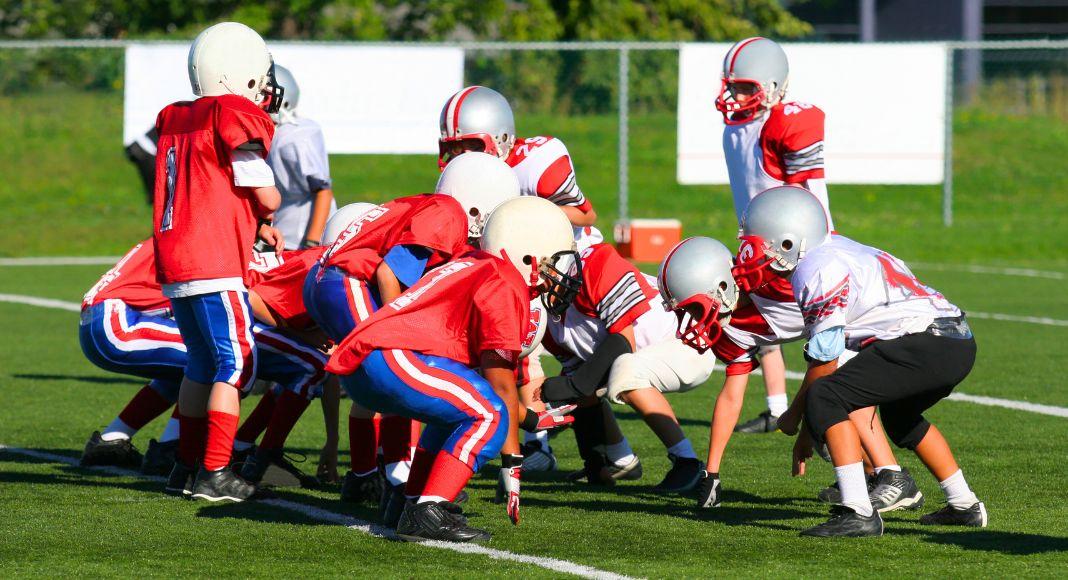
Sponsored by Children’s Mercy.
When parents think about sports concussions, football immediately comes to mind. According to the Centers for Disease Control and Prevention, 10% of all contact sport athletes sustain concussions yearly.
Sports concussions can happen from pee-wee to collegiate and from recreation leagues to competitive teams and while contact sports (football, soccer, etc.) have a higher risk than non-contact sports (tennis, volleyball), concussions can occur in any sport. Compared to adults, there is an increased risk in young, developing athletes. Concussions are more likely to occur in game play versus practice.
How to Avoid Concussions
First and foremost, athletes should always play by the rules of their sport and avoid head contact as much as possible. Data shows up to 25% of athletes are injured when not following the rules. As such, there has been a recent focus on rule changes in hockey, football and soccer to improve the safety of athletes who play contact sports.
Secondly concussions can be decreased by wearing properly fitting equipment. That means football players should wear a helmet that fits correctly. If it’s too big or too small, it increases the player’s risk for a concussion.
Mouthguards are recommended to reduce dental trauma. Recently, studies have shown mouthpieces in hockey can decrease rates of concussions as well. There are ongoing studies to look at other equipment that may help avoid concussions.
Concussion Signs
Losing consciousness is often thought to be associated with concussions, but this occurs in less than 10% of concussed players. Instead, symptoms usually present as physical, emotional and cognitive indicators. A concussion should be suspected in the presence of any 1 or more of the following, after a direct or indirect injury to the head or neck area:
- Headache
- “Pressure in head”
- Neck pain
- Nausea or vomiting
- Dizziness
- Blurred vision
- Balance problems
- Sensitivity to light
- Sensitivity to noise
- Feeling slowed down
- Feeling like they are “in a fog”
- “Don’t feel right”
- Difficulty concentrating or remembering
- Fatigue or low energy
- Confusion
- Trouble falling and/or staying asleep
- Drowsiness
If there’s any concern an athlete has a concussion, they should be removed from play until evaluated by a physician. If the player experiences repeated vomiting, worsening headache or slurred speech, visit the emergency room immediately.
Recovery
If an athlete is diagnosed with a concussion, we recommend an active recovery to get back into a regular routine as quickly as possible, this includes a healthy sleep routine, eating normally, increasing the water or fluid intake, getting back into school and even light exercise, as long as their symptoms are not getting too much worse. We recommend working with the school and following a return to learn protocol or progression of getting back into school. The average recovery time is 3-4 weeks.
Questions for Parents
Before registering their child for contact sports, these are some questions parents should ask:
- Does the school provide academic support or education to their teachers on concussions?
- Is there an athletic trainer on staff?
- Have the coaches participated in concussion education?
- What is the concussion protocol?
- Who is responsible for recognizing concussions during practice and games, and what is the plan if a player has a concussion.
For the most part, contact sports are relatively safe and the benefit of playing sports is much greater than the potential risk of having a concussion or getting injured. Having the proper equipment, playing fair and asking the right questions will help protect athletes so they can continue playing the sports they love.
Learn more about Concussion Treatment.
 Dr. Brian Harvey is a pediatric sports medicine physician, associate program director for the sports medicine fellowship, director of orthopedic education within the orthopedic department, and educational medical director for St Mary University’s master in Athletic Training program. He is an Associate Professor of Orthopedics at UMKC-School of Medicine. He received his Doctor of Osteopathic Medicine degree from Kansas City University. Following residency at Children’s Mercy Hospital Kansas City, he completed his pediatric sports medicine fellowship at Texas Children’s Hospital. After fellowship, he served as a general pediatrician and sports medicine physician in central Kansas before returning to Children’s Mercy as faculty in 2017. Dr Harvey’s clinical interest is on the youth athlete and educating the next generation of sports medicine physicians.
Dr. Brian Harvey is a pediatric sports medicine physician, associate program director for the sports medicine fellowship, director of orthopedic education within the orthopedic department, and educational medical director for St Mary University’s master in Athletic Training program. He is an Associate Professor of Orthopedics at UMKC-School of Medicine. He received his Doctor of Osteopathic Medicine degree from Kansas City University. Following residency at Children’s Mercy Hospital Kansas City, he completed his pediatric sports medicine fellowship at Texas Children’s Hospital. After fellowship, he served as a general pediatrician and sports medicine physician in central Kansas before returning to Children’s Mercy as faculty in 2017. Dr Harvey’s clinical interest is on the youth athlete and educating the next generation of sports medicine physicians.

Children’s Mercy Wichita offers a child-friendly environment to provide families access to pediatric specialty care that otherwise might not be available without traveling out of the community including Cardiology, Endocrinology, Nephrology, Hepatology, Neurosurgery, Plastic Surgery and more.















